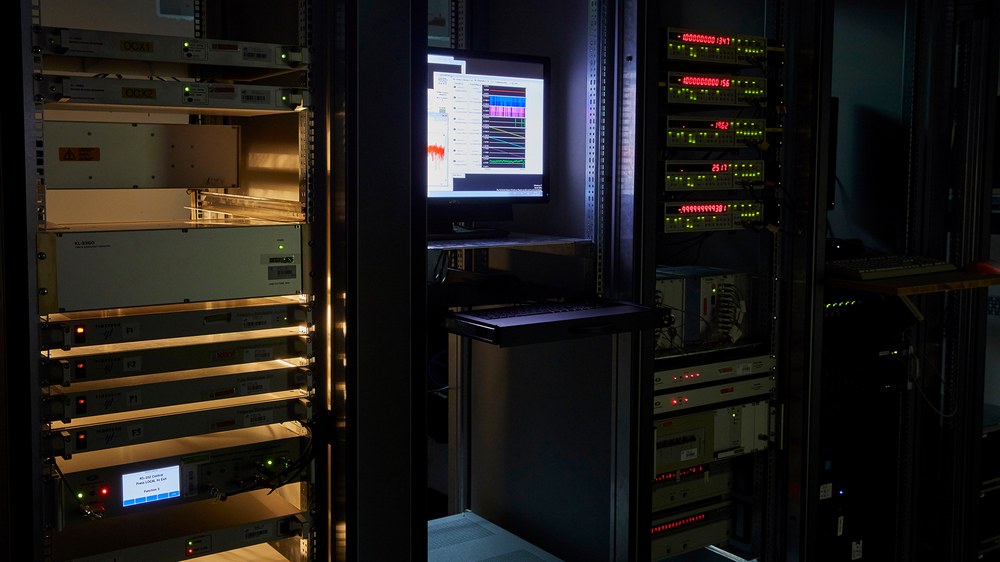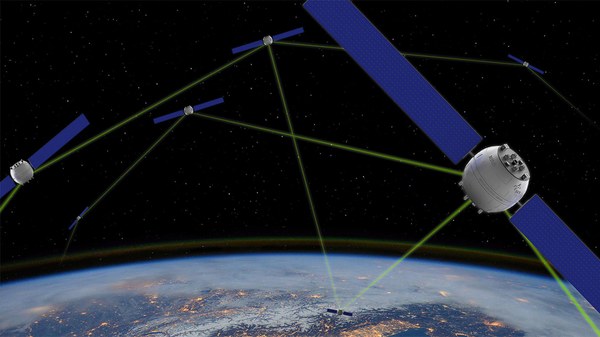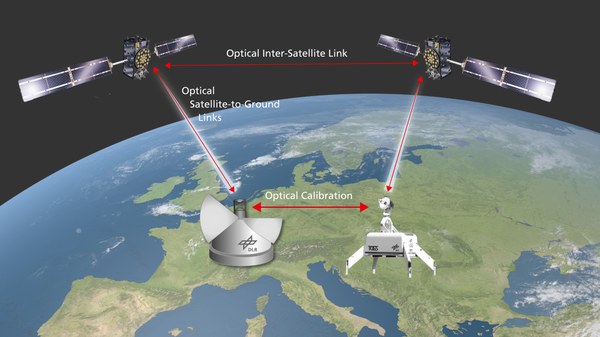System Evolution Group
The working group “System Evolution” focuses on novel technologies and methods for advancing the provision of navigation and timing services, such as the exploitation of inter-satellite links in global navigation systems or the provision of robust timing solutions with clock ensemble approaches.
Novel GNSS architectures with inter-linked satellites
Next-generation Global Navigation Satellite Systems (GNSSs) will greatly benefit from optical technologies aimed at inter-connecting all elements of a GNSS, both in-space (inter-satellite links) and to ground (satellite-to-ground links). These technologies improve system autonomy and resilience, enhance the provision of accurate and robust positioning and timing services, and pave the way to the realization of multi-layer concepts in which existing GNSS Medium Earth Orbit (MEO) constellations can be interfaced to other navigation (e.g. LEO PNT) and communication (e.g. IRIS2) constellations.
The main activities focus on designing and emulating next-generation GNSSs fully exploiting inter-satellite and satellite-to-ground links. In such architectures, MEO satellites are inter-connected with optical links, which enable
- picosecond-level synchronization,
- sub-millimeter ranging,
- and Mbps to Gbps data exchange.
The system architecture could be augmented with a Low Earth Orbit (LEO) segment to monitor the MEO layer and potentially adding to the broadcast of navigation signals (LEO PNT concept). An example of this architecture is the DLR proposal Kepler, a (r)evolutionary concept for third generation GNSSs. Via theoretical analyses and simulations, we assess the operations and performance of such architectures and the benefits at system and end-user levels.
OpSTAR In-Orbit Demonstrator
Our group is involved in the development of the OpSTAR In-Orbit Demonstrator (IOD) mission, which aims at demonstrating the performance and system utilization of optical inter-satellite links to autonomously synchronize satellite clocks, perform accurate inter-satellite ranging to improve orbit determination, and exchange data with low latency and high throughput. OpSTAR will be a space-based testbed for validating future system concepts and processing architecture of a GNSS fully integrating optical inter-satellite links for more robust and accurate global navigation and timing services.
Robust Time Generation
Time generation and dissemination techniques play an important role in navigation systems. We develop methods for robust onboard time generation and realization of system timescales. This can be achieved by implementing a space-based distributed clock ensemble based on the inter-satellite links (and satellite-to-ground whenever available) time offset measurements.
Diverse fault detection techniques guarantee the robustness of the timescales generated, by detecting, identifying and adapting to feared events affecting satellite clocks. These algorithms are tested in our time laboratory, equipped with state-of-the art atomic clocks (among which active hydrogen masers, rubidium clocks and cesium references) and experimental optical frequency references (e.g. optical frequency combs locked to cavity-stabilized lasers).
Current activities
The system evolution group is currently engaged in the following activities
- Development of novel global navigation satellite system and processing architectures concepts
- Generation of robust timescales via clock ensembles, both on ground and in-orbit
- Study of time and frequency transfer over coherent optical channels
- Relativistic aspects in GNSS and inter-satellite links
- Analysis of satellite orbit determination and intra-/inter-system data dissemination methods
- Novel approaches for enhancing GNSS autonomy and robustness
- Estimation of system biases
- Precise Point Positioning for current and future systems
Additionally, we support the activities of the Alternative Navigation Systems group towards the development of alternative systems capable of providing navigation and timing services either in the absence of satellite navigation (unavailability) or to complement current GNSS services.


DeSK e.V.




